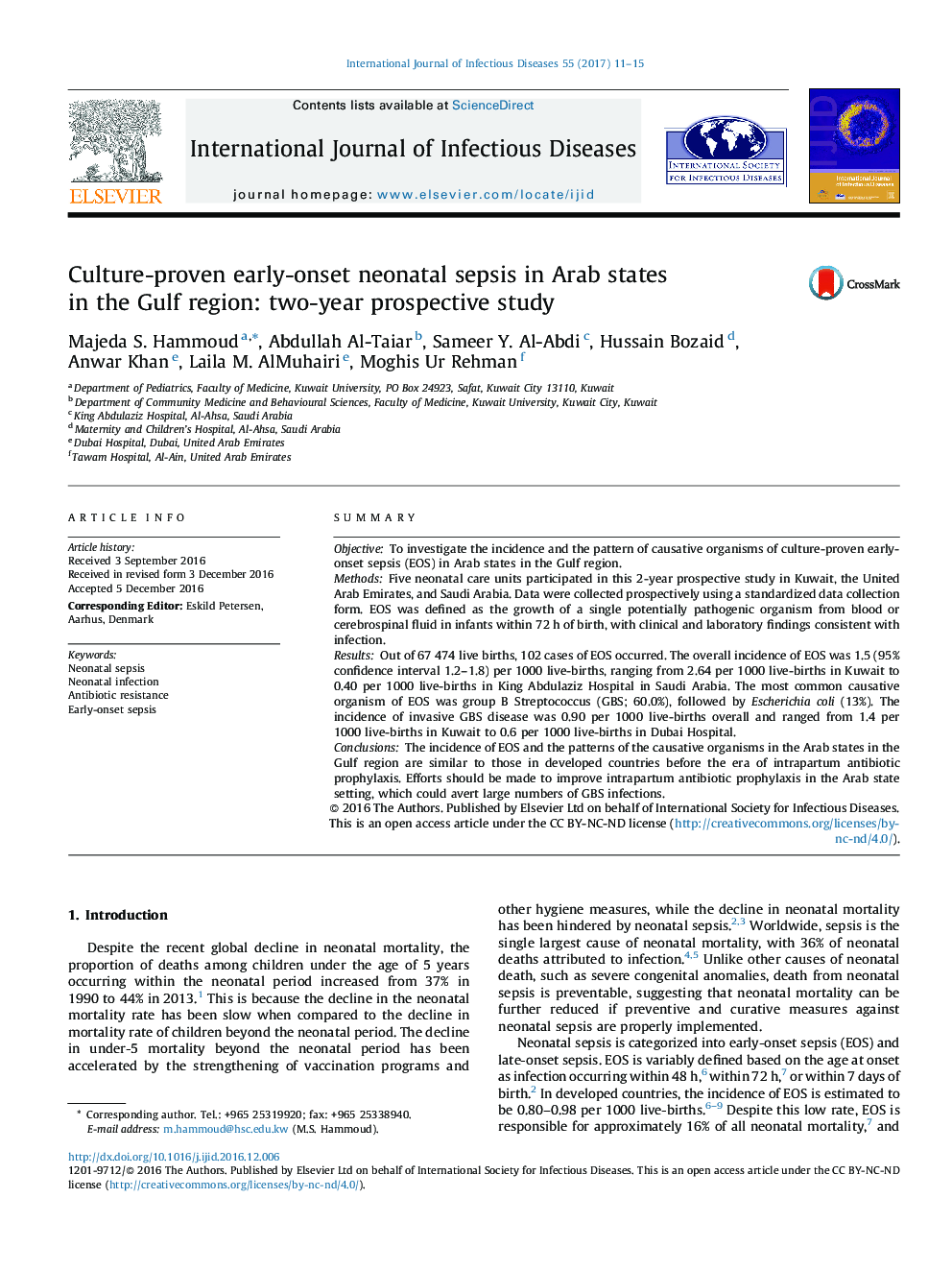| Article ID | Journal | Published Year | Pages | File Type |
|---|---|---|---|---|
| 5667354 | International Journal of Infectious Diseases | 2017 | 5 Pages |
â¢Early-onset neonatal sepsis (EOS) in Arab states in the Gulf region is similar to that in developed countries before intrapartum antibiotic prophylaxis.â¢Escherichia coli were mostly resistant to ampicillin, despite the lack of properly implemented intrapartum antibiotic prophylaxis.â¢Although group B Streptococcus was found to be the leading cause of EOS, E. coli was the leading cause of death due to EOS.
SummaryObjectiveTo investigate the incidence and the pattern of causative organisms of culture-proven early-onset sepsis (EOS) in Arab states in the Gulf region.MethodsFive neonatal care units participated in this 2-year prospective study in Kuwait, the United Arab Emirates, and Saudi Arabia. Data were collected prospectively using a standardized data collection form. EOS was defined as the growth of a single potentially pathogenic organism from blood or cerebrospinal fluid in infants within 72Â h of birth, with clinical and laboratory findings consistent with infection.ResultsOut of 67 474 live births, 102 cases of EOS occurred. The overall incidence of EOS was 1.5 (95% confidence interval 1.2-1.8) per 1000 live-births, ranging from 2.64 per 1000 live-births in Kuwait to 0.40 per 1000 live-births in King Abdulaziz Hospital in Saudi Arabia. The most common causative organism of EOS was group B Streptococcus (GBS; 60.0%), followed by Escherichia coli (13%). The incidence of invasive GBS disease was 0.90 per 1000 live-births overall and ranged from 1.4 per 1000 live-births in Kuwait to 0.6 per 1000 live-births in Dubai Hospital.ConclusionsThe incidence of EOS and the patterns of the causative organisms in the Arab states in the Gulf region are similar to those in developed countries before the era of intrapartum antibiotic prophylaxis. Efforts should be made to improve intrapartum antibiotic prophylaxis in the Arab state setting, which could avert large numbers of GBS infections.
